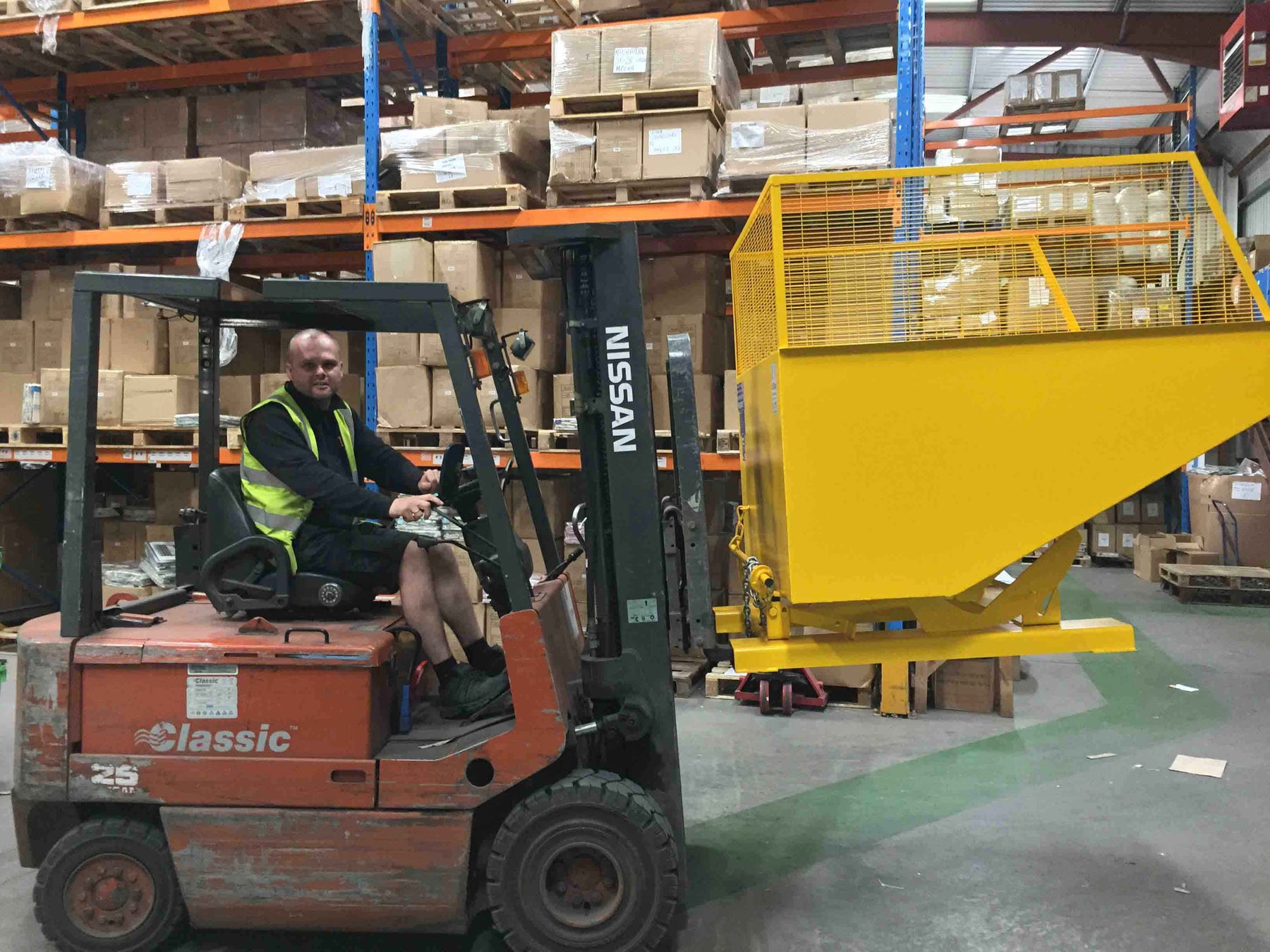
The Evolution of Forklift Skips: From Manual Labour to Modern Efficiency
Have you ever wondered how we went from back-breaking manual labour to the efficient forklift skips we see across different industries today? Here, we take a look at the evolution of waste management through the years and look at where it could go in the future.
The birth of the skip
In 1922, Edwin Walker, an employee at a lorry manufacturing company, devised a system to streamline waste collection.
He introduced large containers that could be loaded onto lorries when full, eliminating the need for horse-drawn refuse carts. This early innovation led to the skips we know today.
From manual to mechanical
Fast forward to the 1930s, and across the pond in the United States, the Dempster brothers were revolutionising waste management with their ‘Dempster Dumpster’.
Their system was the first one for mechanics to empty metal containers. This concept inspired future designs and led to the modern skips that we use around the world.
The UK Skip story
It wasn’t until the 1960s that skips made their debut in the UK. They were imported from Germany, and the metal containers quickly became the safest and most efficient way to collect construction waste.
When first introduced, skips were all the same size. However, over time, they’ve expanded into different sizing options, which allow them to be used in different ways and for different projects.
Enter the forklift skip
As industries expanded, there was a strong demand for material-handling solutions. The forklift skip simplified waste disposal by reducing manual labour and increasing productivity.
The early days of manual waste handling
Wheelbarrows and handcarts were the norm for workers to transport debris and materials from one spot to another. As manual waste removal was the only solution.
Not only was it physically demanding and time-consuming, but it also often led to delays in project timelines. By relying on human labour, it all came down to their ability, speed, and endurance on a daily basis.
Challenges of manual labour
Issues don’t just stop at exhaustion either; with repetitive lifting and manual transportation, you have an increased risk of injury.
According to the UK’s Health and Safety Executive, musculoskeletal disorders account for around one-third of all reported injuries in the waste management industry, especially during collection activities.
Not only does the time lost due to injuries impact the length of the job, but it also impacts productivity as a whole and creates safety hazards when waste isn’t removed as quickly as it needs to be.
Manual waste handling was the norm for many years, but the challenges revealed a need for more efficient and safer methods, paving the way for mechanised solutions.
Introduction of basic mechanical skips
As forklifts became more widely used, the first generation of mechanical skips designed to work with them was created in the early 20th century.
These skips were made with basic tipping mechanisms. Workers loaded materials into the skips and, with a simple manual release, tipped the contents to where they were needed.
This design reduced the need for physical labour, as forklifts could move and empty skips with minimal human effort.
The introduction of mechanical skips boosted productivity. Tasks that might have taken multiple workers considerable time could be completed more quickly and without as many hands needed. Health and safety were also improved, as direct contact with heavy materials was minimised.
Technological advancements in forklift skips
Through the years, technological advances have transformed forklift skips from simple containers to sophisticated tools. Here’s how:
Material innovations:
Manufacturers have shifted from basic steel designs to reinforced materials that are lightweight and durable. With rust-resistant coatings and heavy-duty durability, the lifespan and reliability of these skips have improved.
Auto-release skips:
The future here is with auto-release skip mechanisms, which allow skips to tip safely at height. There’s no need for wires, ropes, or the driver to leave the cab; the skips can simply tip automatically and safely.
Modern-day efficiency and customisation
Forklift skips have become essential tools in various sectors because they streamline material handling and waste disposal.
Modern forklift skips come in a variety of designs tailored to specific needs:
-
Auto-tipping skips: When lifted to a certain height, these skips automatically tip their contents, reducing manual intervention and speeding up the disposal process.
-
Bottom-emptying skips: These skips, designed with a mechanism that opens the base, help with precise material unloading.
-
Colour-coded recycling skips: Keep waste segregated with the use of different colours for specific types of recyclable materials.
Key benefits
Using forklift skips in daily operations offers several advantages:
-
Faster waste disposal and material handling: With no need for manual handling, forklift skips enhance productivity by removing the need for moving and disposing.
-
Improved workplace safety: Modern skips are equipped with secure locking mechanisms to stop materials from being accidentally removed.
-
Customisable options: Design your forklift skip that combines all of the features that you need specifically.
The future of forklift skips
While it might be easy to think that forklift skips have nowhere else to go, there are plenty of advancements still to be made.
We could see the emergence of fully automated, AI-driven skips, with systems created based on data that automatically manage waste collection and disposal and optimise routes and schedules based on our needs.
What’s more, a growing need for sustainable practices could influence skip design with a focus on recycled materials and energy-efficient production processes becoming more apparent.
If you want to upgrade your material handling processes, explore our wide range of modern forklift tipping skips at Forklift Skip Market now. Discover how our innovative designs can enhance workplace efficiency.
